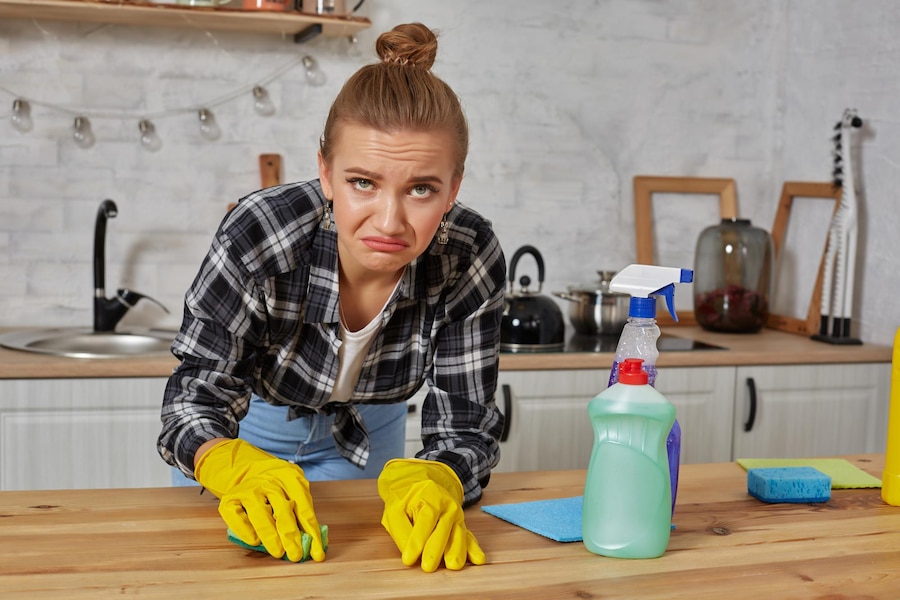Many individuals overlook certain sections of the, which can easily become a hotspot for harmful germs.
We might consider our kitchen to be a safe zone free from germs and bacteria, but in reality, it ranks as one of the most unsanitary areas of our home.
Several factors contribute to the contamination of this space, including:
- The presence of potentially contaminated foods like raw meat, poultry, and eggs which can carry bacteria such as salmonella, E. coli, and Campyl.
- Humidity from sinks and faucets, steam rising from pots during cooking, dishwashing, and inadequate ventilation, as moist environments promote bacterial and mold growth.
- Elevated temperatures, particularly while cooking, which create optimal conditions for bacteria to thrive.
- Surfaces that may be tainted with germs, including cutting boards, stovetops, and sinks.
In summary, regardless of our diet, we face daily risks from bacterial contamination, which can seriously affect our health.
To mitigate these dangers, it’s crucial to thoroughly sanitize all areas of the kitchen—or at least reduce the risks. However, despite dedicating time and effort to cleaning, some spots may be overlooked.
Notably, five areas in the kitchen are most vulnerable to becoming breeding grounds for pathogens:
The 5 Most Contaminated Areas of the Kitchen
Refrigerator Compartments
Often, we carelessly place food items bought from the store inside the refrigerator, exposing ourselves to significant contamination risks.
Food products like raw eggs, meat, and fish can harbor bacteria such as salmonella, listeria, and E. coli that can thrive in chilled environments.
To minimize this risk, store raw meat on a separate shelf above vegetables and regularly clean the drawers with hot water and dish soap. Additionally, monitor the internal temperature of your refrigerator.
Sink
Dirty dishes, utensils that have been in our mouths, and remnants of both raw and cooked food can accumulate in the sink, forming a biofilm on the surface that may host dangerous bacteria like salmonella and E. coli.
To combat this issue, clean the sink daily with hot water and disinfectant. Also, avoid letting food scraps pile up in the sink.
Sponges and Dishcloths
Though they are essential for cleaning and drying, sponges and dishcloths can harbor as many bacteria as the inside of a toilet.
Replace sponges every two weeks and clean them regularly in a dishwasher or washing machine. Ideally, switch to a dishwashing brush, which is a more eco-friendly option (since sponges are plastic) and better for your health.
Spice Jars
Handling spice jars with unwashed hands, especially when dipping fingers inside, can lead to cross-contamination in the kitchen.
Make it a habit to clean the outside of spice jars frequently with hot water and dish soap, and use a teaspoon to dispense spices, avoiding direct contact with potentially unclean hands.
Door Handles and Knobs
Lastly, surfaces like handles and knobs can accumulate bacteria such as salmonella and staph from dirty hands.
Maintaining hand hygiene and regularly disinfecting these surfaces is vital in minimizing bacterial growth.
How to Reduce Bacterial Contamination in the Kitchen
While it’s impossible to eliminate all risks and achieve a completely sterile kitchen, we can adopt certain habits to decrease bacterial contamination. Here are some suggestions:
- Wash your hands often with warm water and soap, particularly before cooking and after handling raw foods.
- Clean kitchen surfaces consistently with a sanitizing and disinfecting product.
- Use separate cutting boards for raw meat and other food items.
- Exercise caution while cooking, especially with meat, poultry, and eggs.
- Avoid leaving raw food at room temperature for prolonged periods.
- Frequently empty the organic waste bin.

